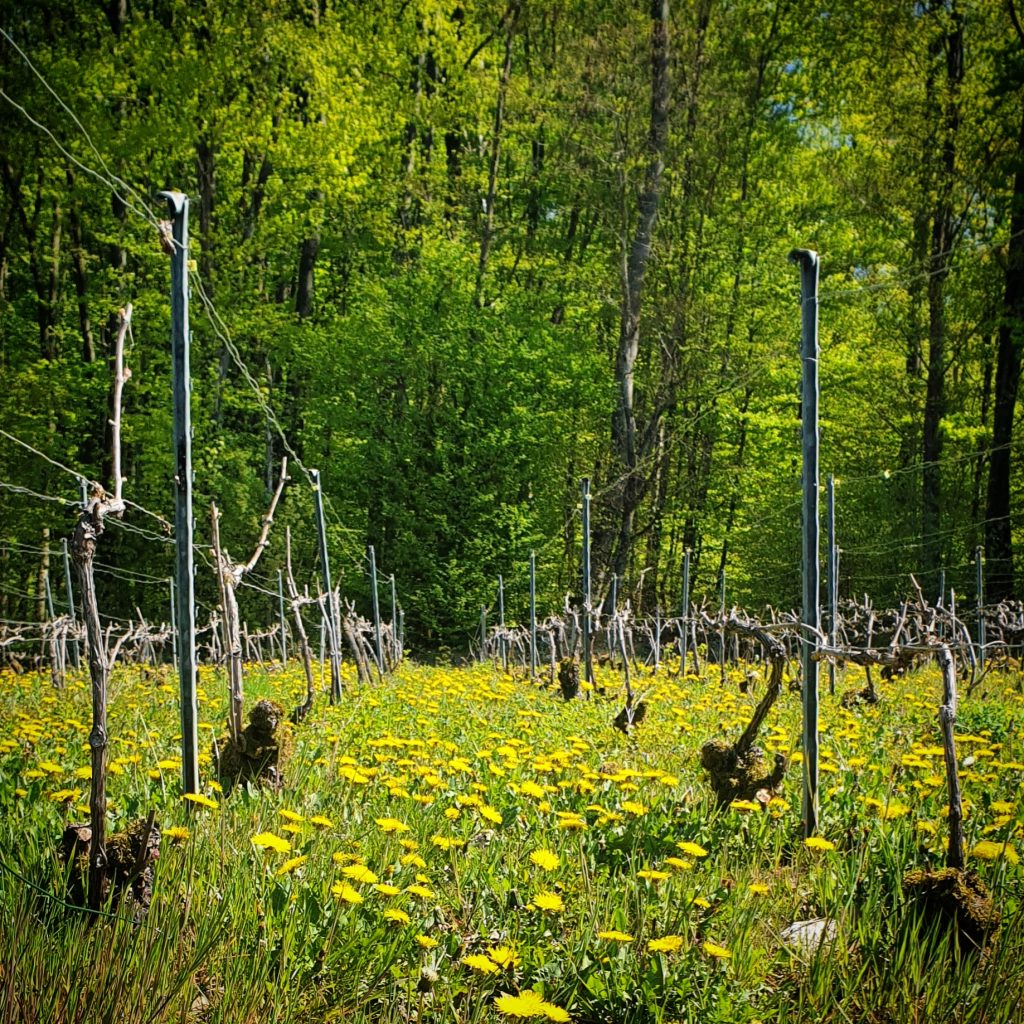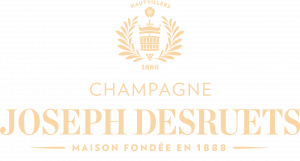Respect of the environment
Over generations, respect of terroir, patience and rigour became the keywords of the House Joseph Desruets. Anxious of the respect of our environment, we do our maximum to contribute at the biodiversity saving.

Vine staking
Vine staking is core to vinyard architecture and to how wine-growers treat the plots they are in charge of all year long. It is also a tricky subject in terms of landscaping, as vine posts are very visible during the periods of the year when the vines have no leaves. Our Vineyard is committed to using wooden posts because they fit well into the landscape. In winter, their colour is warmer than that of steal, which is a good thing. Wooden posts today are also a reference to the wooden stakes that used to support vines in olden times. Back then, vines were planted “en foule” (huddled together).
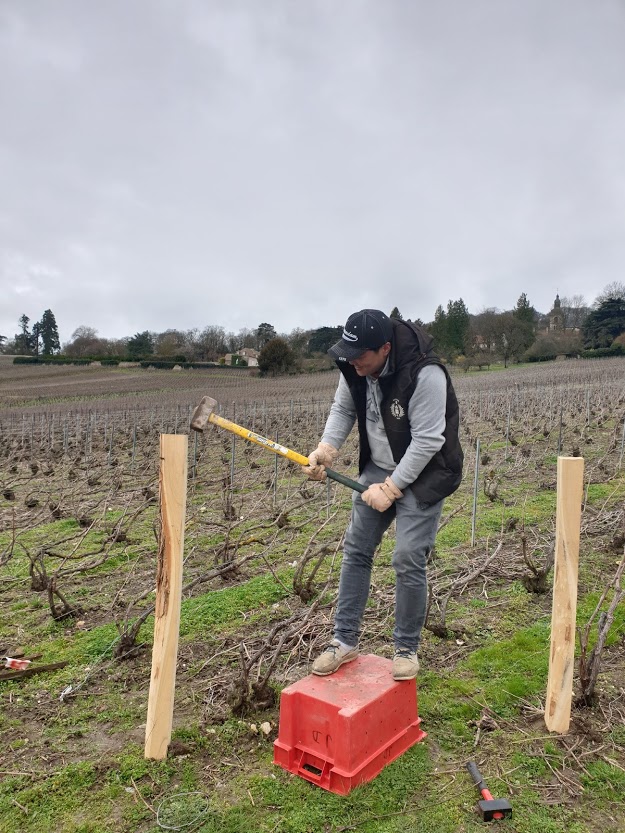
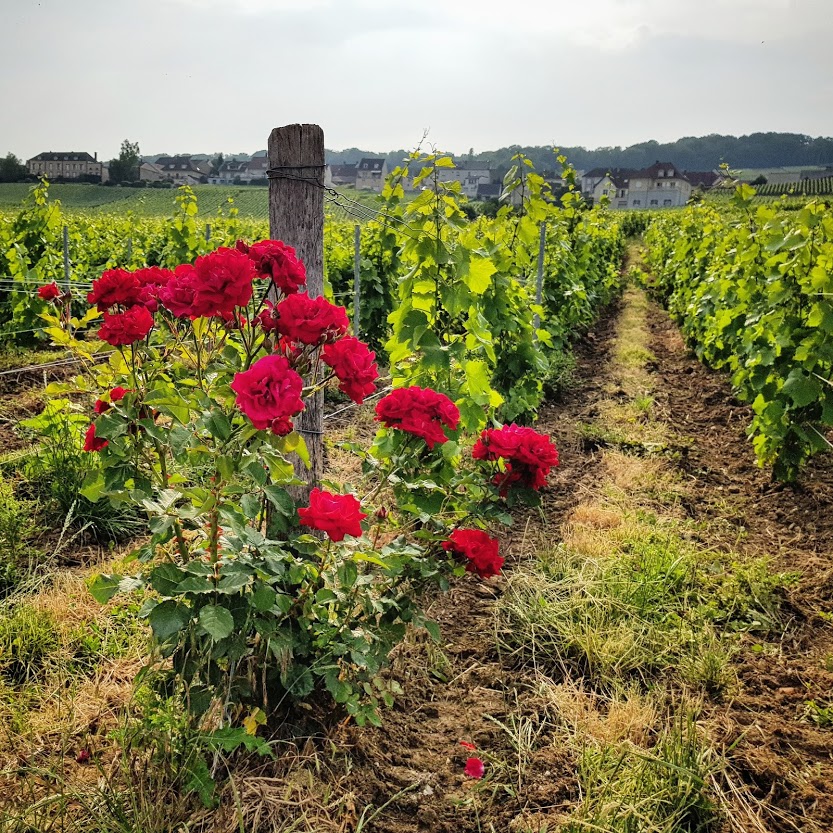
Planting rose bushes
Rose patches can often be found running along the lines of vinesin our vineyard. They were not planted for aesthetic reasons only. They are sensitive to the same diseases as vines (including mildew), but tend to become ill earlier, which leaves enough time to react and treat the vines before it is too late.
La biodiversité du vignoble
Les reliefs sont une des valeurs paysagères les plus manifestes des coteaux. Ils viennent assouplir et animer la trame géométrique rigoureuse des vignes. A l’échelle des parcelles de vignes, c’est tout un jeu d’ajustements des pentes qui se présente fréquemment sur les limites parcellaires, afin de rattraper le niveau d’une route, d’un chemin, d’une lisière forestière ou bien celui d’une parcelle adjacente. Ce jeu de microreliefs créés par l’Homme, talus ou dispositifs de soutènement, fait partie des éléments qui donnent du caractère aux paysages des vignes, notamment dans les vues rapprochées. Là où cela est possible, nous enherbons nos talus naturellement ou via l’usage ponctuel de semis de plantes annuelles et fleuries. Au croisement d’un chemin ou de deux parcelles, nous replantons des arbres fruitiers tels que les pêchers de vigne, rares aujourd’hui dans notre vignoble.
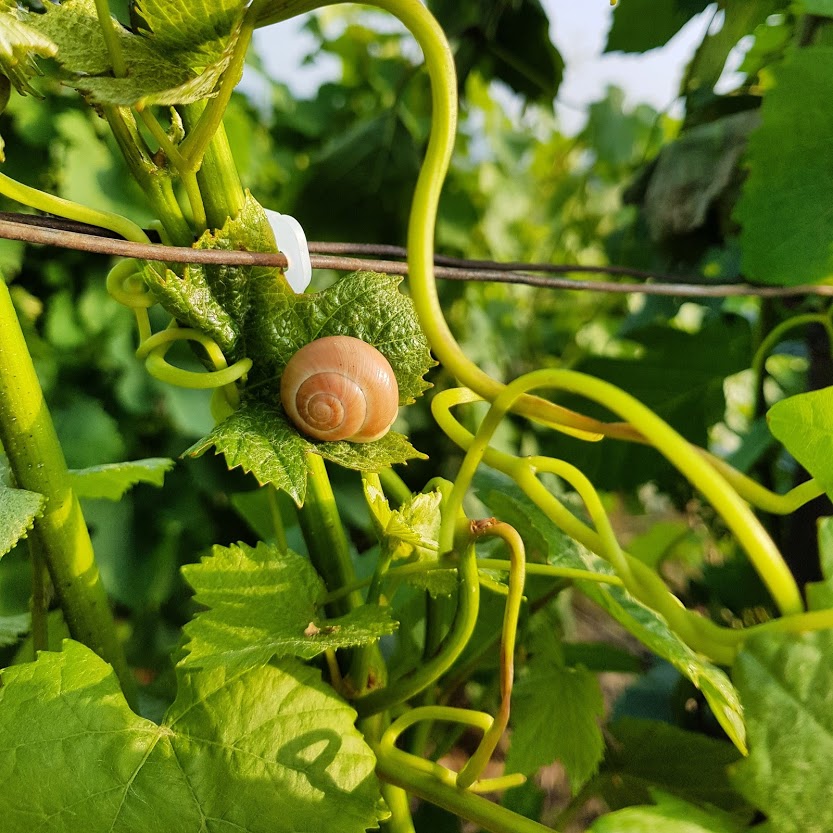

Enherbement naturel
Since 2014, we no longer use herbicides for natural grassing. This choice is not only aesthetic. It is also home to vine auxiliaries such as ladybirds … Did you know that it destroys certain pests of the vine such as cochineals?
But that’s not all, grass cover also helps reduce runoff and fight against soil erosion. To avoid competition between vines and grasses, we remain vigilant throughout the year on the vigor of the vines and their yield. Three times a year, we use the plow to plow the soil at the foot of the vines. We naturally reduce competition between vines and “weeds” and allow better soil aeration. In addition, by cutting the superficial roots of the vine, we force the vine to take root deeply. The vines can thus, from year to year, benefit from the particular subsoil of Champagne…
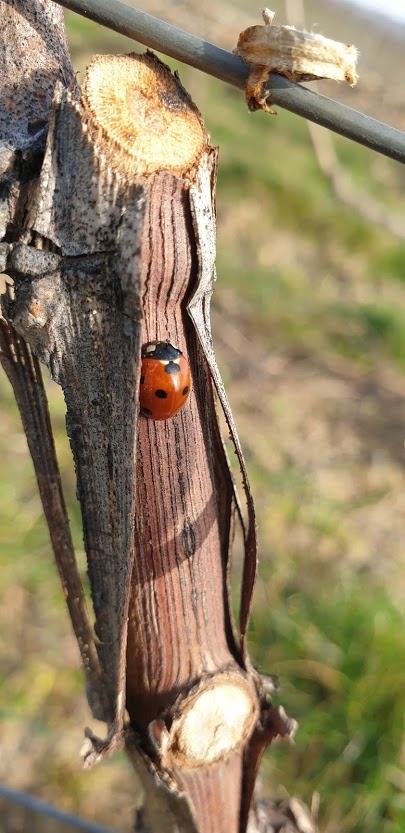
Contributing to the Biodiversity Programme of Champagne Comity
Since 2012, the CIVC Champange Comity has set up a pitfall trap for arthropods on one of our plots. Arthropods are considered to be a good indication of global biodiversity. The resulting data have been added to an analysis of the landscape around the trap (how near to the village it is, whether there are hedges or not, whether plots and embankments have been grassed or not…) with a view to highlighting potential correlations between the landscape and its biodiversity.
The survey has shown that some elements are positively correlated with biodiversity, which means that, when these elements are present, arthropods are more abundant. This is the case for forrests and copses for example. Some elements however are negatively correlated with biodiversity, and these include asphalted roads and annual crops.
Initial results are probing and show that biodiversity is still abundant in our vineyard. Nevertheless, the survey needs to be continued for several years to come for the initial trends to be confirmed or rejected. This will then lead to practical recommandations regarding the rural planning of the wine-growing hillsides!
Space not taken by vines in the vineyard
The hills are amongst the most visible and distinctive assets of our surrounds. The gentle slopes constrat noticeably with the strict geometric lines of the vines. And when focusing in on the individual plots of vines, we see the slopes come right down to their edge, follow along a road, a path, the edge of a wood, or a neighbouring vineyard. These man-made slopes or retaining structures all contribute to the character of this wine-growing landscape. Where possible, we grow grass or we plant annuals and flowering plants, and where two paths or two plots meet, we have replanted fruit trees such as the vine peach, which is seldom found in our vineyards nowadays.
